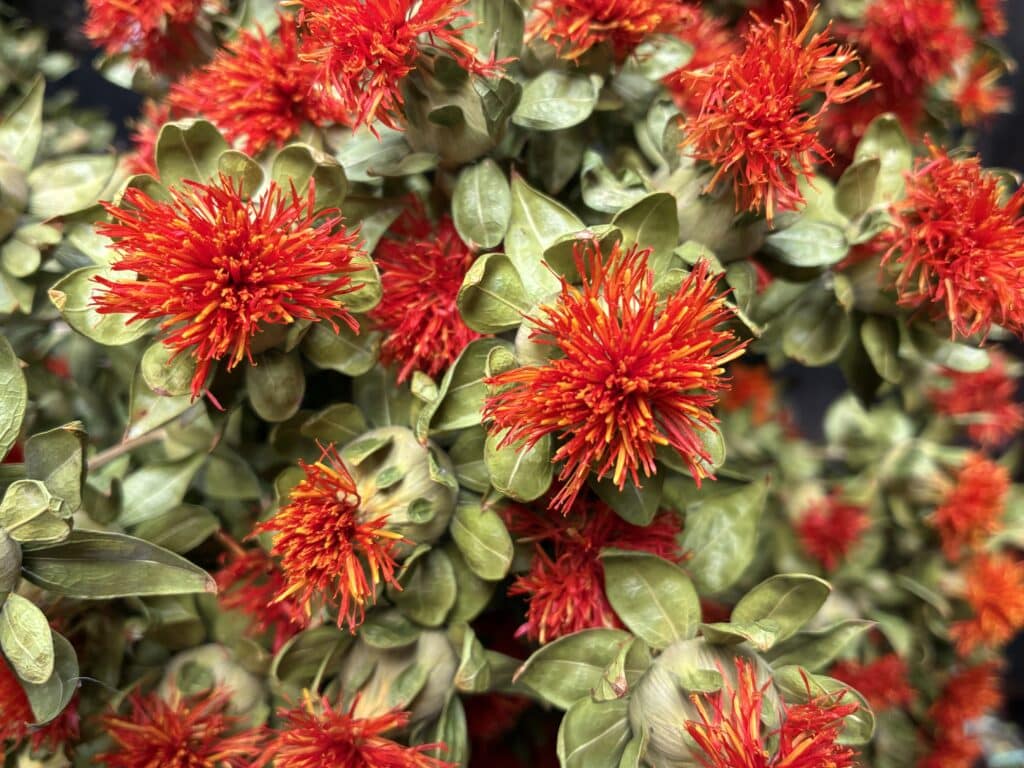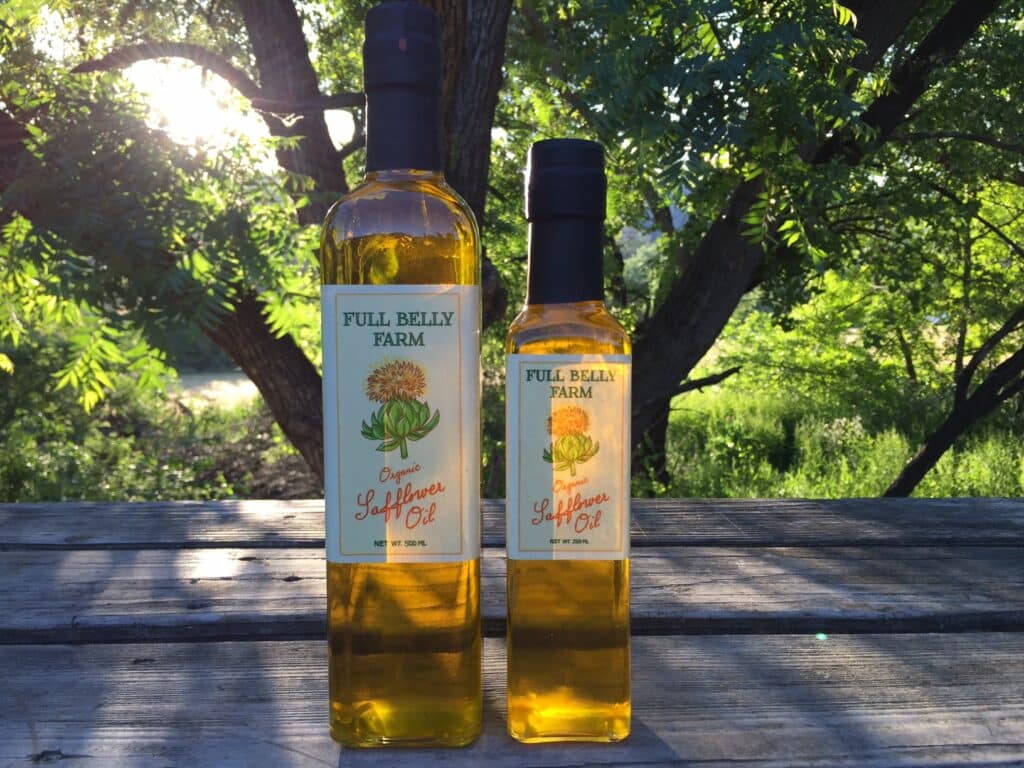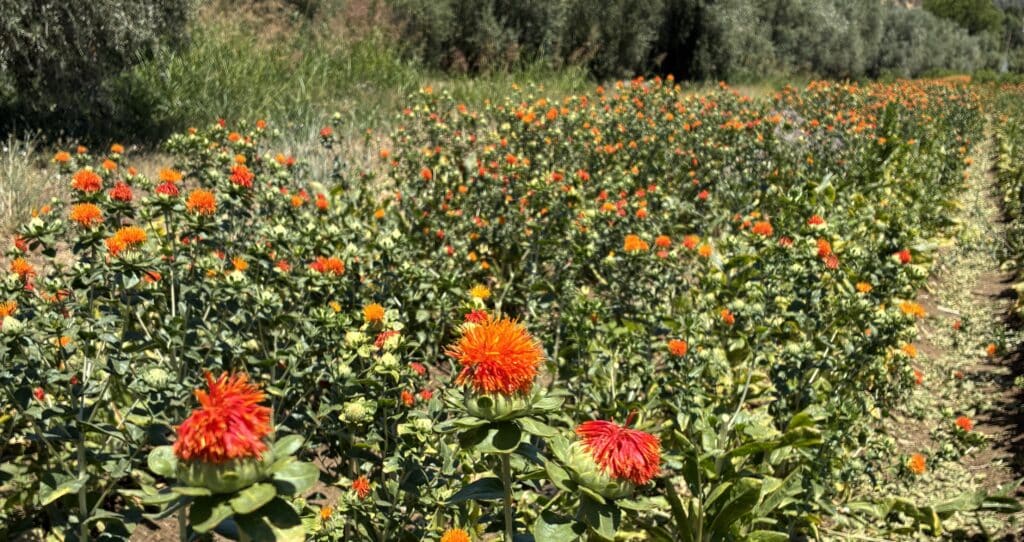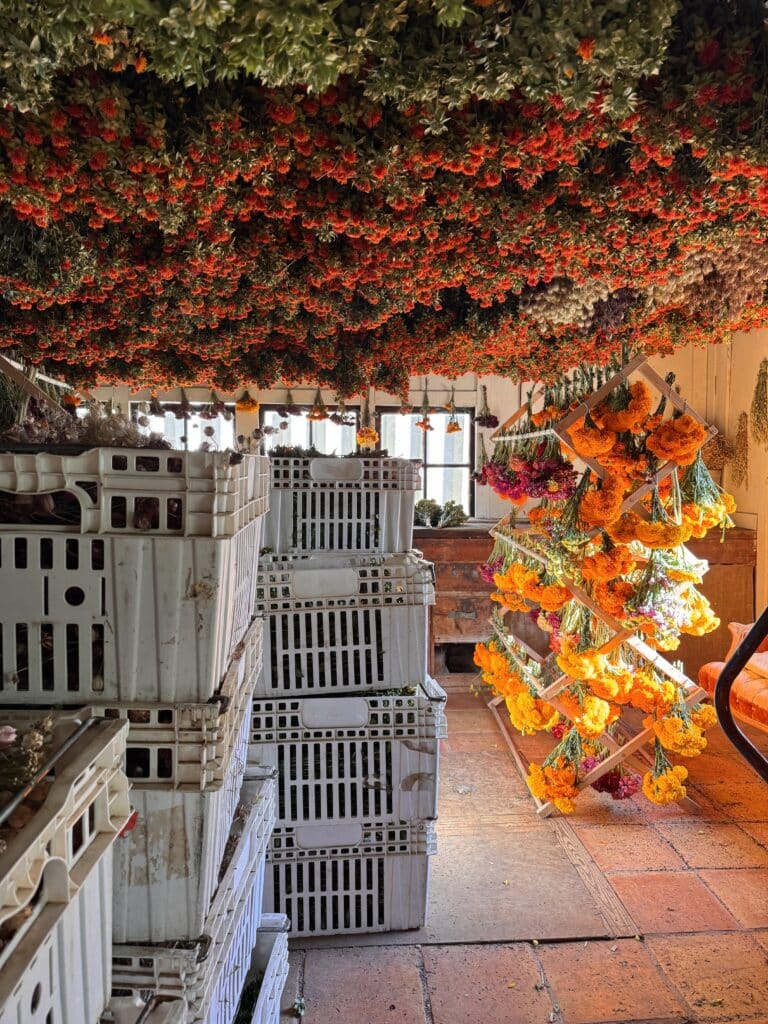Any guesses what this is?

It’s safflower! This brilliantly-colored, spiky flower, is a heavy hitter crop at the farm, filling FOUR roles! It’s in bloom right now, making it a perfect time to highlight it.
Safflower is one of the oldest domesticated crops and has also been used as a medicine, dye, and in food and teas. Today, safflower is most commonly grown for oil, and that’s one of the reasons we grow it. It’s a deep rooted, hearty plant that doesn’t require much water. We plant it in February in moist soil and then it’ll maybe need one more irrigation before it’s harvested in July with the combine. We save some seed for the next planting and then press the rest to make oil. The oil is cold pressed with a buttery, earthy flavor, available in 500mL and 250mL bottles. It’s a high-heat oil great for frying and making popcorn, but we like it for non-cooking applications, like salad dressings, too.

Part of the reason that safflower doesn’t need much water is that it has a taproot that forages deep into the soil – as deep as 8 to 10 feet! This taproot can bring up nutrients from deep in the soil and can break up hard and compacted soil, encouraging more air and water. All are great for soil health so we often include it in our summer cover crop mix – a second use for safflower.

We also grow safflower as a fresh-cut flower! We cross a variety called “Superior Orange,” which unlike the yellow type normally grown for oil, is bright orange. Safflower has traditionally been used for dying and has even been used as a saffron substitute (one of its names is “fake saffron”), and when you see the flowers, it’s clear why! You can find it blooming in the fields right now.

Safflower isn’t just a feature in our fresh flower mixes, but we also are drying a lot of it right now in the Wreath Room to be used in fall for wreaths and dried bouquets.
Those are the four roles safflower fills for us: oilseed, cover crop, fresh flower, and dried flower. What a neat plant! Though it’s just one of several crops that we grow that play multiple roles and have multiple uses! See the wreath below for a few more!
Elaine Swiedler, CSA Manager

Photo credit: Molly DeCoudreaux, Designing with Dried Flowers
